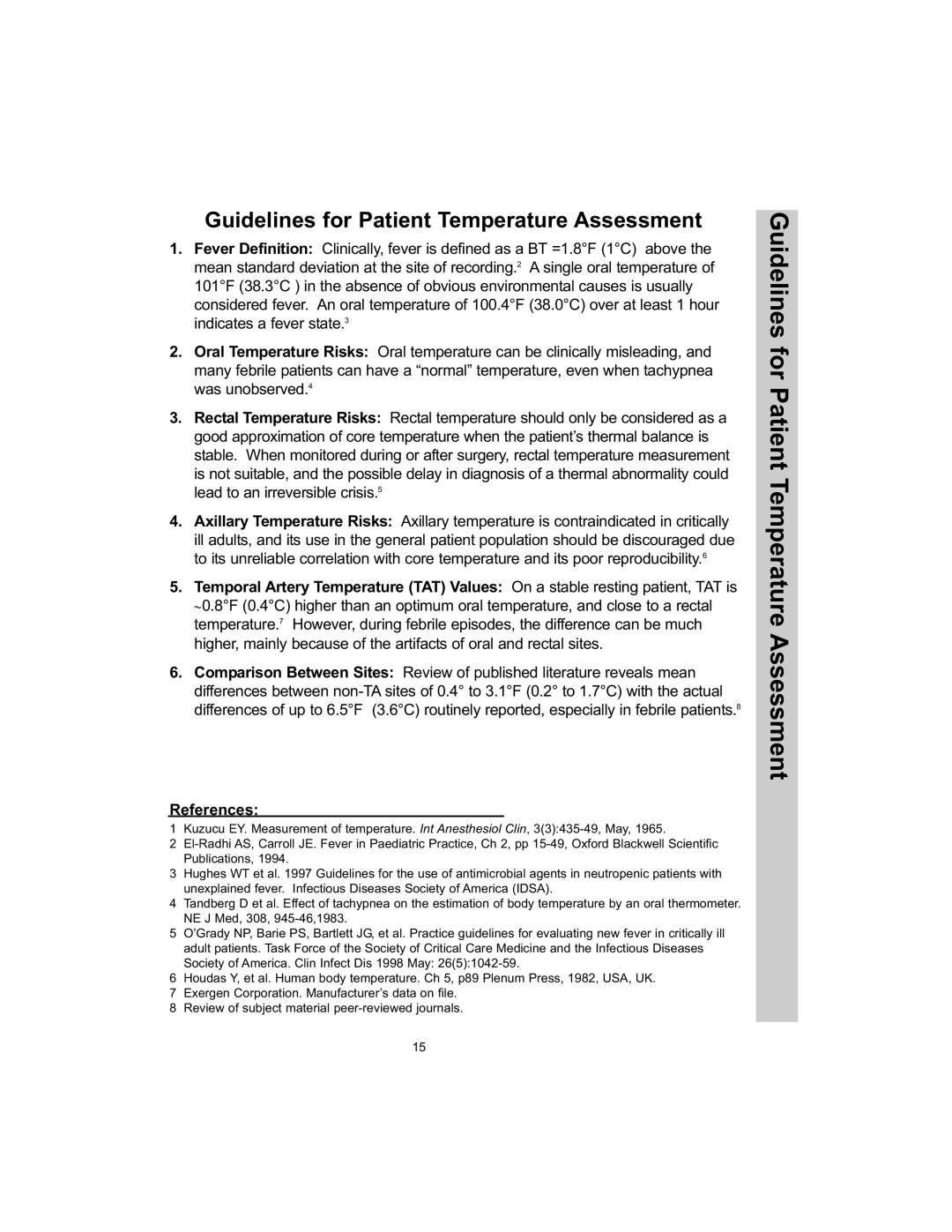
Guidelines for Patient Temperature Assessment
1.Fever Definition: Clinically, fever is defined as a BT =1.8°F (1°C) above the mean standard deviation at the site of recording.2 A single oral temperature of 101°F (38.3°C ) in the absence of obvious environmental causes is usually considered fever. An oral temperature of 100.4°F (38.0°C) over at least 1 hour indicates a fever state.3
2.Oral Temperature Risks: Oral temperature can be clinically misleading, and many febrile patients can have a “normal” temperature, even when tachypnea was unobserved.4
3.Rectal Temperature Risks: Rectal temperature should only be considered as a good approximation of core temperature when the patient’s thermal balance is stable. When monitored during or after surgery, rectal temperature measurement is not suitable, and the possible delay in diagnosis of a thermal abnormality could lead to an irreversible crisis.5
4.Axillary Temperature Risks: Axillary temperature is contraindicated in critically ill adults, and its use in the general patient population should be discouraged due to its unreliable correlation with core temperature and its poor reproducibility.6
5.Temporal Artery Temperature (TAT) Values: On a stable resting patient, TAT is
∼0.8°F (0.4°C) higher than an optimum oral temperature, and close to a rectal temperature.7 However, during febrile episodes, the difference can be much higher, mainly because of the artifacts of oral and rectal sites.
6.Comparison Between Sites: Review of published literature reveals mean differences between
References:
1 Kuzucu EY. Measurement of temperature. Int Anesthesiol Clin,
2
3Hughes WT et al. 1997 Guidelines for the use of antimicrobial agents in neutropenic patients with unexplained fever. Infectious Diseases Society of America (IDSA).
4 Tandberg D et al. Effect of tachypnea on the estimation of body temperature by an oral thermometer. NE J Med, 308,
5O’Grady NP, Barie PS, Bartlett JG, et al. Practice guidelines for evaluating new fever in critically ill adult patients. Task Force of the Society of Critical Care Medicine and the Infectious Diseases Society of America. Clin Infect Dis 1998 May:
6Houdas Y, et al. Human body temperature. Ch 5, p89 Plenum Press, 1982, USA, UK.
7 Exergen Corporation. Manufacturer’s data on file.
8 Review of subject material
Guidelines for Patient Temperature Assessment
15
